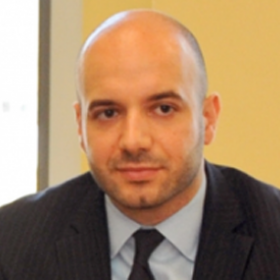
Verifying Warhead Dismantlement: Past, Present and Future
On October 20, 2010 the EastWest Institute hosted a roundtable discussion on verifying warhead dismantlement with Mr. Andreas Persbo, Executive Director of the Verification Research, Training, and Information Centre (VERTIC). The discussion brought together leading experts, policymakers and diplomats to discuss VERTIC’s recently released report, Verifying Warhead Dismantlement: Past, present, future.
Verifying Warhead Dismantlement is the center’s independent account of the UK-Norway Initiative, a three-year project to investigate the challenges of verifying the dismantlement of a nuclear warhead. VERTIC’s report seeks to place the UK-Norway Initiative in the wider historical context of past dismantlement exercises and studies in order to identify the commonalities and differences between those exercises and the achievements of the Initiative.
At the discussion, Andreas Persbo outlined the major conclusions and recommendations of the report, including:
- Verified warhead dismantlement is not only technically feasible, but also a necessary confidence building measure.
- Dismantlement is of limited value unless it is done in a transparent and verifiable process.
- A primary concern in verifying warhead dismantlement is balancing the delicate relationship between inspector confidence and the host country’s priorities to protect classified information.
- The possibility of building a dedicated dismantlement facility should be further explored.
- Authentication of warheads and their components remains a significant challenge in future verification regimes.
- Technical collaboration and practical exercises are key steps in designing a verifiable dismantlement program.
Discussion participants noted the valuable contributions of both the report and the UK-Norway Initiative and discussed which recommendations could be applicable in other scenarios.
Although the experiment involved a nuclear weapon state and a non-nuclear weapon state, participants did not feel it was clear that this model could be replicated. Before including non-nuclear weapon states in verification exercises, nuclear weapon states must overcome political obstacles and confidence deficits. Some participants argued that the likelihood of including non-nuclear weapon states will only increase if nuclear states significantly lower their arsenals and nuclear weapon states are more likely to initially involve international organizations, such as the International Atomic Energy Agency, in verification exercises.
On the issue of verification in a nuclear weapons-free world, it was argued that when “global zero” is achieved then verification will operate similarly to the verification of non-nuclear weapon states today. This end state will only exist when all states are under safeguard agreements. Mr. Persbo maintained that verifying baseline declarations is the most difficult obstacle in verification, arguing that the easiest cheating method is to simply lie about the number of existing weapons in an arsenal. However, as nuclear weapon states decrease the size of their arsenals then it will be easier to envision verification in a nuclear weapons-free world.
Referring to the UK-Norway Initiative and future verification models, participants also recognized that it is not likely that one model would be accepted by all nuclear weapon states. Nuclear weapon states have different internal security concerns, priorities, and sensitivities surrounding their nuclear arsenals. Given the necessity to maintain a degree of confidentiality around classified information, nuclear weapon states will likely favor different models of verifying warhead dismantlement.
Referring to the North Korea nuclear program, another participant raised the question of the denuclearization of the Korean peninsula and complete verification. Participants noted the difficulties of verification exercises in North Korea, and the unlikelihood that the any such exercises would be allowed by Pyongyang. Participants largely agreed that no verification model currently exists that could be successfully applied to North Korea.

